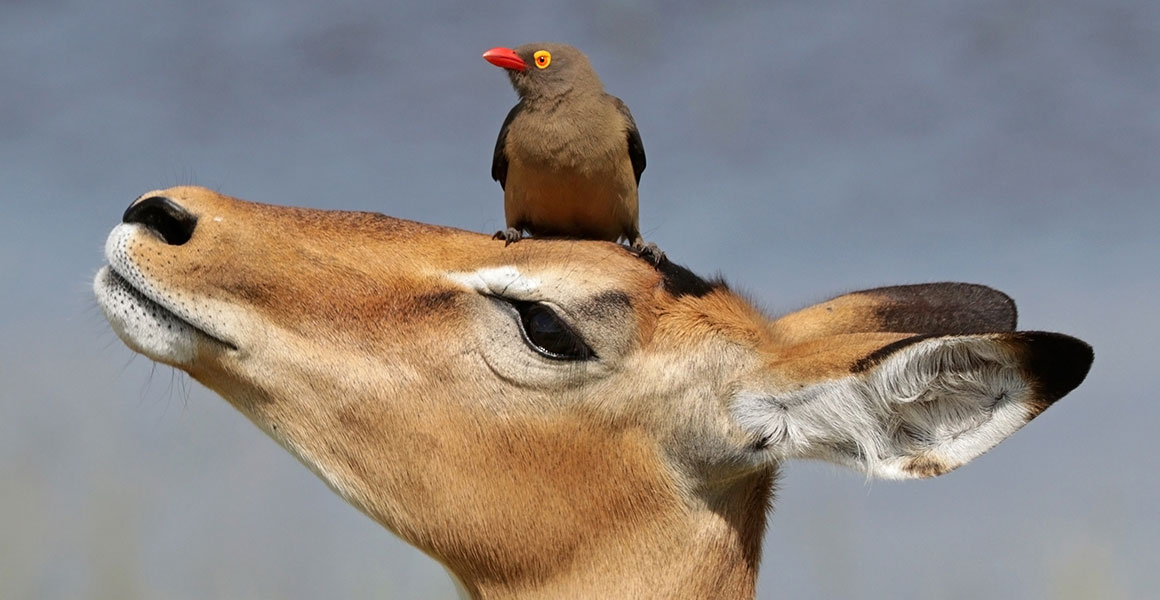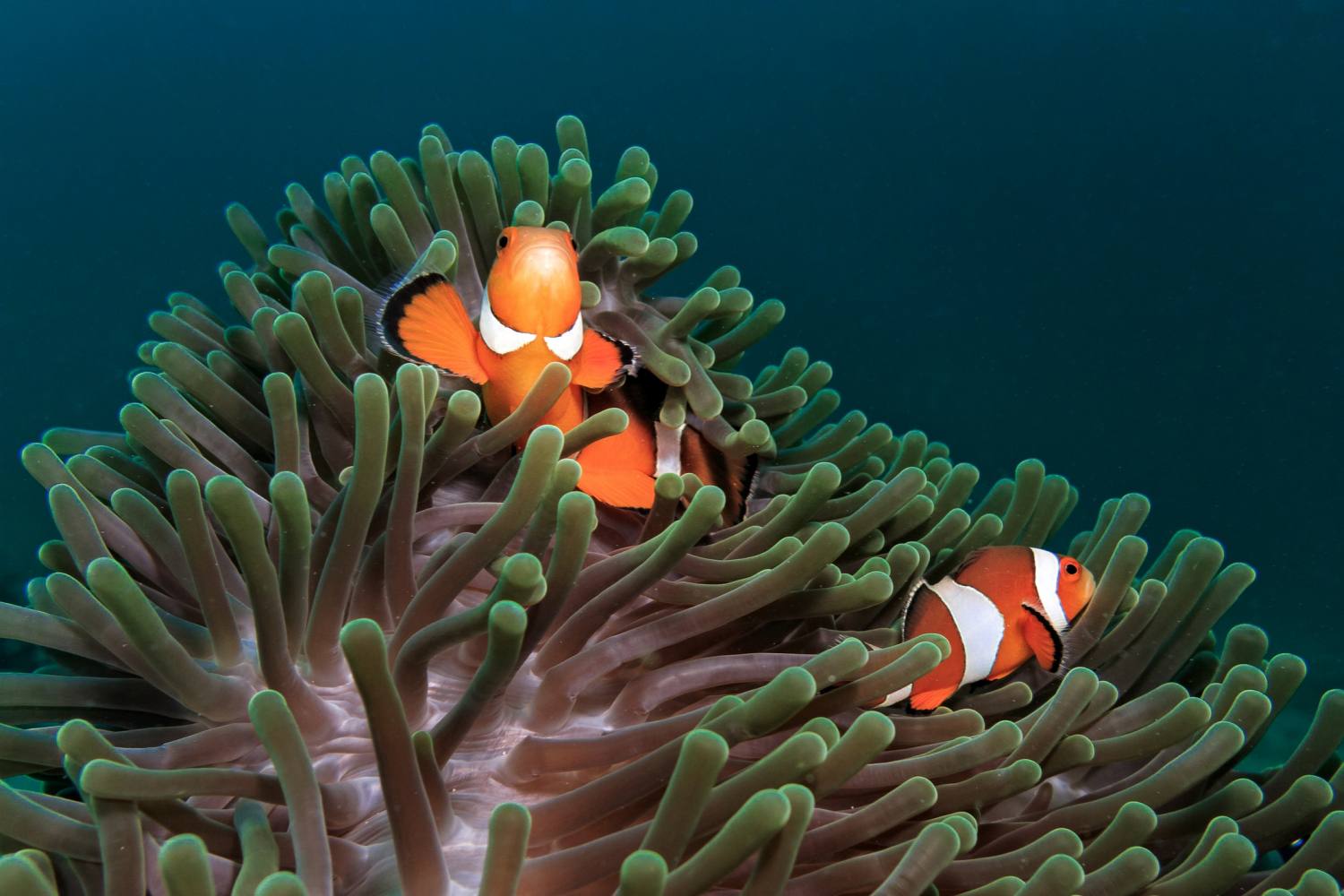Mutualistic relationships are a type of symbiotic relationship between two species in which both benefit from the interaction. Examples include pollination of flowers by insects, cleaner fish that eat parasites off larger fish and bacteria living inside the human gut aiding digestion. Mutualism can even be found in some cases of predation, such as when birds consume insects while aerating and fertilizing plants with their droppings at the same time.
In these types of relationships, neither organism is harmed or killed; instead they both benefit from each other’s presence. This type of interaction may take place over an extended period of time or be a brief encounter – either way, it results in increased survival for both organisms involved.
Mutualistic relationships are a type of symbiotic relationship between two different species that have mutual benefits from each other. This form of interaction is essential for both parties to survive and thrive in their environment and can be found everywhere, from the microscopic world to larger ecosystems around the globe. A classic example of this type of relationship is seen between bees and flowers where the bee collects pollen as food while providing cross-pollination services to plants which increases their chances of reproduction.
Symbiosis: Mutualism | Twig Secondary
Mutualistic Relationship Example
One example of a mutualistic relationship is the one between clownfish and sea anemones. Clownfish live among the stinging tentacles of anemones and are protected from predators by their host’s toxins, while also providing food to the anemone through leftover scraps from their meals. This beneficial relationship helps both species survive in their shared environment, as they provide protection and nutrients to each other.
Commensalism
Commensalism is a type of symbiotic relationship in which one organism benefits from the other without causing any harm or benefit to it. This type of interaction is common in nature and can be seen between species such as birds that perch on larger animals, plants that use insects for pollination, and bacteria living inside our bodies. The interactions may even provide protection against predators or help organisms find food sources.
Symbiotic Relationship
A symbiotic relationship is a special type of relationship between two different species in which both organisms benefit from the association. These relationships can be mutualistic, meaning that both species gain something beneficial, or commensalism where one organism benefits while the other isn’t really affected either way. Symbiotic relationships are incredibly important for maintaining healthy ecosystems and are found in many environments around the world.
10 Examples of Mutualism
Mutualism is an important ecological relationship between two species, wherein both organisms benefit from their interactions. Examples of mutualism include the relationship between bees and flowers, where the bee collects nectar for food while also aiding in pollination; ants and aphids, where the ant will protect the aphid from predators in exchange for honeydew secretions; clownfish and sea anemones, which provide protection to one another by living together; lichens, which are a combination of fungi and algae who work together to create food through photosynthesis; and termites and protozoa that live inside them to help digestion. Other examples of mutualism include bacteria on roots that fix nitrogen for plants in exchange for sugars, hummingbirds and flowers exchanging nectar for pollen spread by birds’ wings, fish cleaning other fish as part of a symbiotic relationship providing beneficial services to each other.
Mutualism Examples in Humans
Mutualism is a type of symbiotic relationship where both species benefit from the interaction. One example of mutualism between humans is beekeeping, which involves keeping bees in man-made hives and providing them with food, shelter and protection in return for honey or wax. Another example is crop rotation, where farmers alternate growing different crops over multiple seasons to replenish soil nutrients while preventing pests from becoming resistant to one particular crop variety.
Finally, beneficial bacteria living within our intestines aid in digestion as well as boosting our immune system – an excellent illustration of how humans can form mutually beneficial relationships with tiny organisms!
Mutualism in Biology
Mutualism is an important concept in biology, referring to the relationship between two organisms where both benefit from the interaction. This type of symbiotic relationship can occur between species ranging from bacteria and fungi to plants and animals. Mutualistic relationships are essential for maintaining healthy ecosystems, as they increase biodiversity, promote nutrient cycling, and improve soil fertility.
For example, some birds help disperse seeds while other insects pollinate flowers which helps both these species survive and thrive in their environment.
Symbiotic Relationship Examples in Humans
Humans are capable of forming a variety of symbiotic relationships that benefit both parties involved. For example, the relationship between doctors and their patients is mutually beneficial; the doctor provides medical expertise while the patient receives treatment for any health issues they may have. Another common example is the partnership between farmers and bees; farmers rely on bees to pollinate their crops in order to increase yields, while bees feed off of nectar produced by these plants.
Lastly, humans also form important partnerships with other species such as domesticated animals like cats or dogs. In this case, people provide food and shelter for the animal in exchange for companionship and protection from potential predators.
Mutualism Definition And Example
Mutualism is a type of symbiotic relationship in which two organisms from different species benefit from each other. In this relationship, both organisms are dependent on one another for survival and receive some kind of benefit. A classic example of mutualism is the relationship between bees and flowers: the bee collects nectar from the flower to make honey, while the flower gets pollinated by the bee – allowing it to produce fruit or seeds.

Credit: www.nhm.ac.uk
What is an Example of a Mutualistic Relationship?
An example of a mutualistic relationship is the one between oxpeckers and large mammals, such as rhinos or elephants. The birds feed off ticks, mites and other parasites on the mammal’s skin, providing them with relief from irritation caused by these pests. In turn, the mammal provides protection for the bird against predators since it can see better due to its location on their backs.
Additionally, when an animal is in danger nearby, oxpeckers have been known to raise an alarm call which alerts their host of potential danger. This mutually beneficial relationship between animals is just another way nature finds balance in otherwise chaotic ecosystems.
What are the 5 Symbiotic Relationships?
Symbiotic relationships are a type of relationship where two organisms interact with each other in a mutually beneficial way. The five types of symbiotic relationships are commensalism, mutualism, parasitism, protocooperation and neutralism. In commensalism one organism benefits from the relationship while the other is not significantly affected; an example would be barnacles on whales or epiphytes (plants that grow on trees).
Mutualism is when both species benefit from the relationship; for instance bees pollinating flowers and receiving nectar in return or fungi providing nutrients to plants as well as gaining energy through photosynthesis. Parasitism is when one organism lives off another and typically causes harm to its host like ticks feeding off blood or lampreys attaching themselves to fish. Protocooperation occurs when two species interact but neither has direct benefit such as prey animals warning others of predators or animals sharing food sources.
Finally, neutralism describes a situation where two organisms have no interaction either positive nor negative such as many different species living peacefully side by side in an ecosystem without interacting with one another directly.
What is a Mutualistic Vs Symbiotic Relationship?
A mutualistic relationship is a type of symbiotic relationship where both species benefit from the association. In this kind of relationship, each organism provides something that the other needs. For example, some ants live in and around certain plants, providing it protection from predators while gaining access to sweet nectar produced by the plant.
Similarly, many birds and mammals feed on insects that are attracted to flowers for their nectar or pollen; these animals inadvertently help pollinate flowers as they move between them. Symbiotic relationships can be either obligate or facultative; obligate meaning that one or both organisms depend on the other for survival, whereas facultative means that either organism can survive without its partner if necessary.
What Mutualistic Relationships Do Humans Have?
Humans have a vast array of mutualistic relationships with other living creatures, from small bacteria to large animals. These mutually beneficial partnerships allow humans to gain resources such as food and shelter, while providing the other species involved with necessary necessities in return. For example, honeybees provide humans with essential pollination services for agricultural crops, allowing us to produce more food than we would be able to without their assistance.
Additionally, humans have also established long-term relationships with certain domesticated animals such as cows and chickens which provide us with meat, milk and eggs that are an integral part of our diets. Even the soil beneath our feet contains numerous organisms that help break down organic material creating nutrients for plant life which in turn provides oxygen and clean water for all living things on earth. This unique relationship between humankind and nature is one of the most fascinating aspects of life on Earth – it truly demonstrates just how interconnected we all are!
What is a Mutualistic Relationship between Plants And Animals?
A mutualistic relationship between plants and animals is one in which both species benefit from the interaction. For example, many pollinators such as bees and butterflies feed on nectar from flowers while at the same time helping to spread the plants’ pollen so they can reproduce. In return, these plants provide food for their animal partners.
Other examples of mutualism include ants that protect certain plant species by attacking herbivores that try to eat them, as well as birds that spread seeds far and wide when they feed on fruits. All in all, mutualistic relationships are essential for sustaining healthy ecosystems and providing a balance between different species in nature!
Conclusion
In conclusion, mutualistic relationships are an essential part of the environment and have a significant impact on the health and balance of ecosystems. As we’ve seen, these interactions between species can be beneficial to both parties involved. Allowing both species to benefit from each other’s presence and providing them with resources that they wouldn’t normally be able to access without one another.
Mutualism is essential for keeping nature in balance, so it’s important to understand how these relationships work in order to protect them and ensure that our planet continues to thrive.



